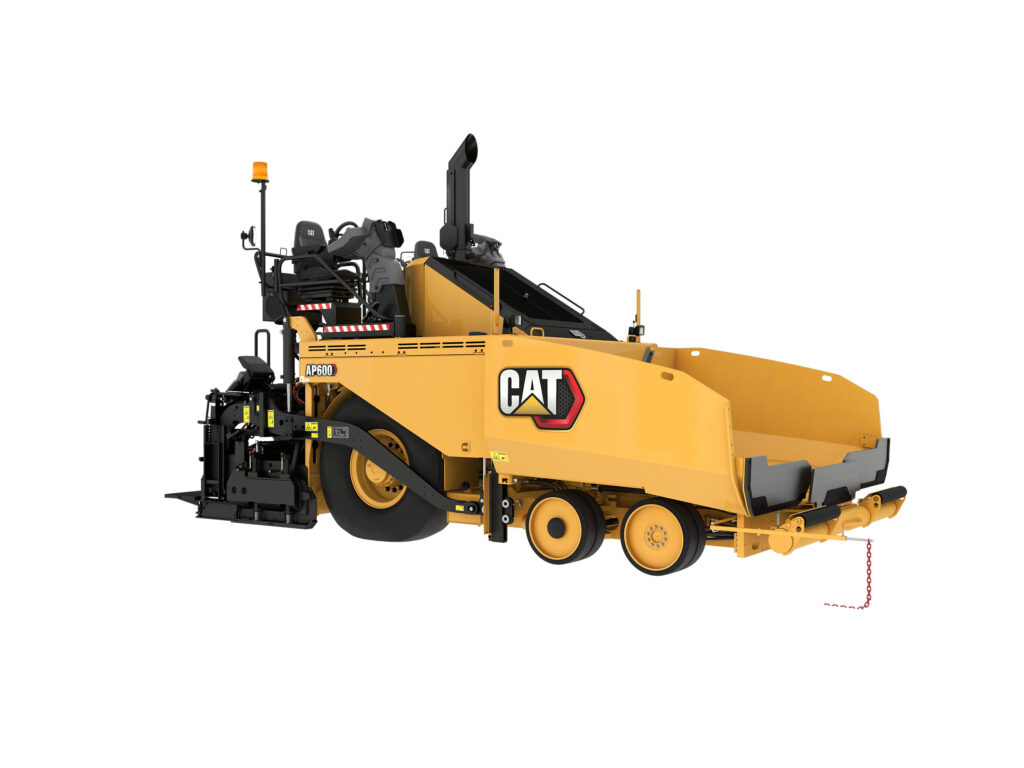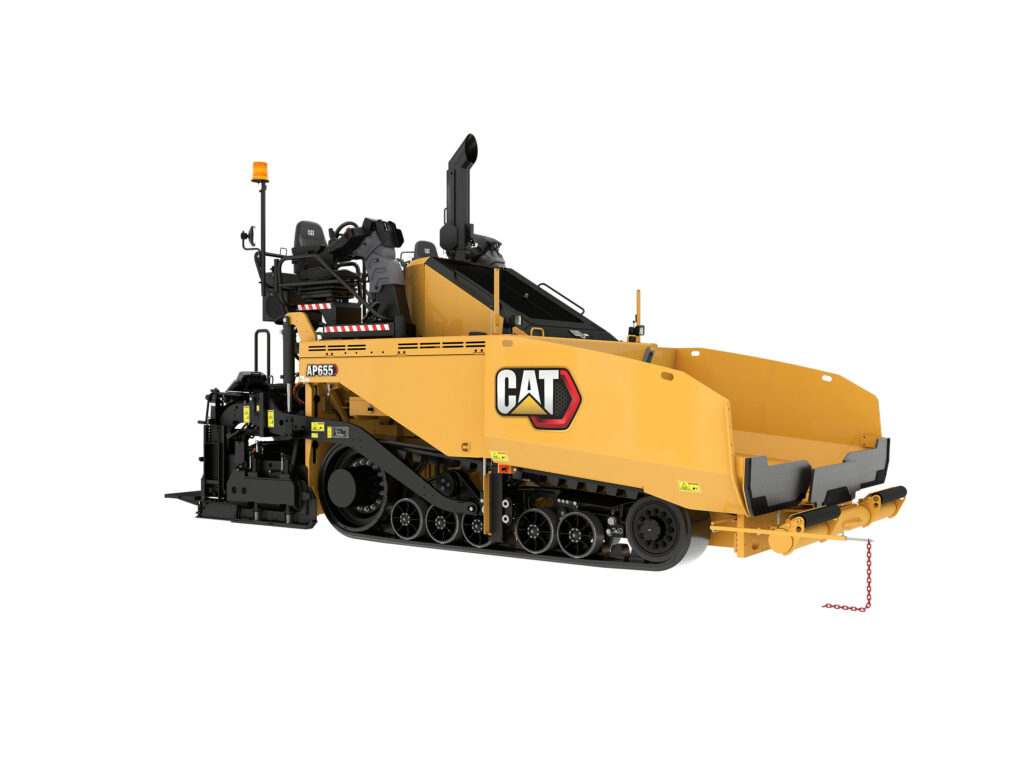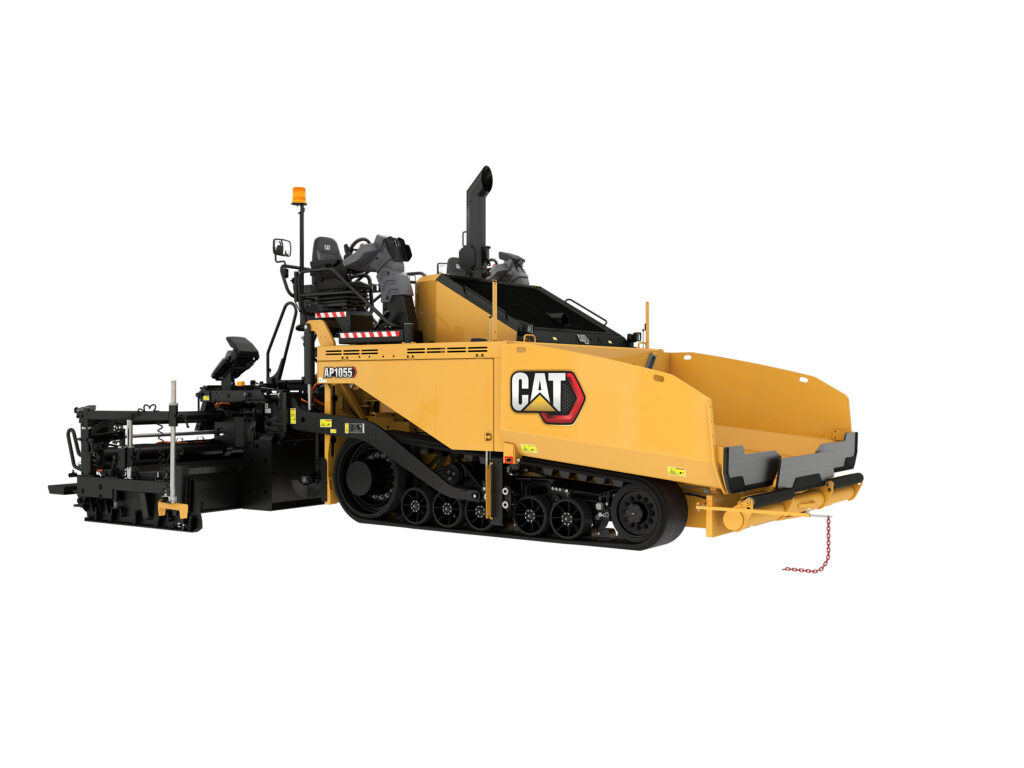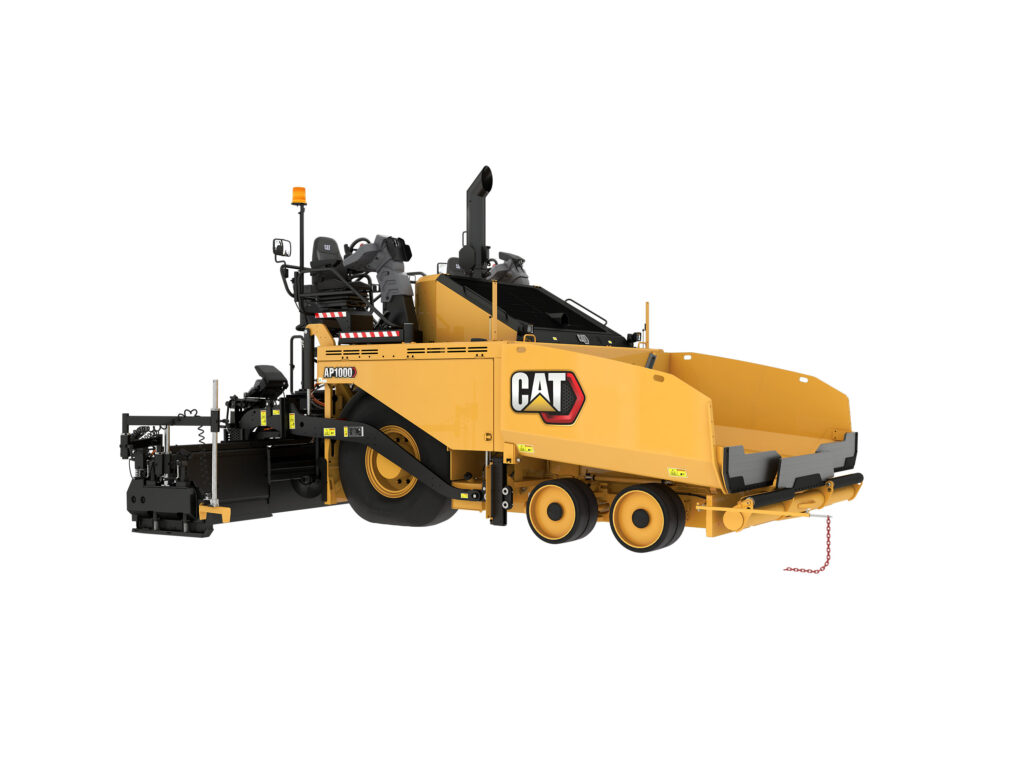Caterpillar announces updates to the large asphalt paver line. The new Cat AP600, AP655, AP1000, and AP1055 Asphalt Pavers build upon the proven performance of the F-series pavers that brought fuel efficiency, simplified operation, and more comfort. With new screed offerings, technology that assists with paver setup, better material retention, and enhanced visibility with standard opposite side mirrors, these new models continue to evolve into machines that offer contractors a high return on investment.

Front-Extender Screed Additions
The new Cat SE47 FM and SE60 FM Screeds utilize extenders located in front of the main screed. These front-mounted extenders are extremely stable for wider width paving and make it easy to quickly reduce paving widths when maneuvering around obstacles by easily drawing material back into the auger chamber. The SE47 FM offers a paving range of 8-ft to 20-ft, 6-in, while the SE60 FM provides a 10-ft to 25-ft 6-in paving range. Optional extension packages as well as berm attachments enable these screeds to perform exceptionally well in a variety of applications in both urban and rural settings.

Simple Setup, Repeatable Performance
Pave start assistant is an optional machine management tool that simplifies setup for repeatable performance on job sites with similar paving requirements. The integrated system records the functioning conditions of both the paver and screed including paving width, paving speed, and tow-point position to name a few. When moving to a similar job site, the operator simply activates a previously recorded profile from the display menu, and the system conveniently matches machine setup specifications for proven, reliable performance. This option is available on the SE50 V, SE50 VT, SE60 V, SE60 V XW and SE60 VT XW screeds.
Material Monitoring
Monitoring asphalt in the hopper is a vital function for keeping the paving train running smoothly. However, at times it can be a difficult task. Too much material results in spillage, while too little material starves the feed system. Too simplify this function, an optional sensor has been added for material height with an indicator located on the operating display that enables the operator to quickly determine when to continue paving or when to call for more material. In combination with the height sensor is an optional temperature sensor that keeps the operator informed of the asphalt temperatures being delivered to the paver for a convenient quality control process check.

Thermal Mapping
Thermal segregation is one of the leading causes of road failure in the asphalt paving industry. Thermal variations can leave uneven surface textures behind the screed. These variations cool more quickly and can lead to less-than-ideal compaction results and shorter life expectancy of the paved surface. Early detection of thermal variation enables timely process control adjustments to be made. To combat these variations, contractors can monitor asphalt surface temperatures utilizing the optional Cat infrared camera and a Global Navigation Satellite System (GNSS) enabled by RTK accuracy. Viewing real-time temperatures, contractors can identify variations and take action to manage the plant-to-paver delivery process and fine-tune paving practices for more uniform lay-down temperatures.
Enhanced Material Retention
Paver and truck exchanges provide an opportunity for asphalt spills and leaks. A new flashing design on the front of the hopper offers increased memory and temperature resiliency that helps provide better spill prevention. In addition, scrapers located on the backside of the hopper help prevent leaks between the hopper wings and engine compartment.

New Styling
New trade dress provides a distinguished appearance that helps keep the machine fleet looking modern and up to date. The letter designation has also been removed and will follow serial number recognition for parts and service support.
Source: Caterpillar
 Copyright 2020 All rights reserved.
Copyright 2020 All rights reserved.